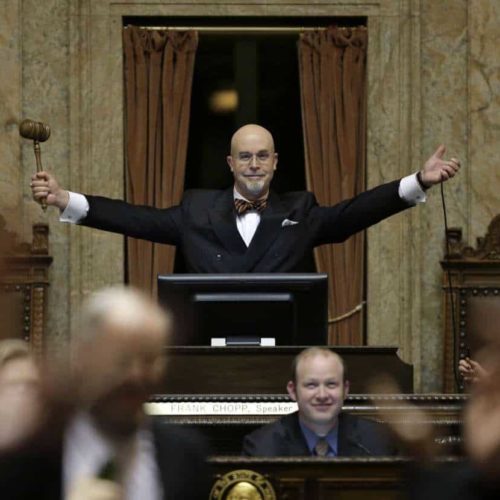This story was co-published withThe Associated Press.
Introduction
When Washington state made one of the first major moves to place limits on opioid painkiller prescriptions, pharmaceutical companies fought back — using the Pain Care Forum, a national network of drug companies and opioid-friendly nonprofits, many of them funded by drugmakers.
Alarm bells rang at the forum in 2007 after Washington state’s agency medical directors — spurred by overdose deaths of patients in the worker’s compensation system — drafted guidelines that would require pain specialists to approve high doses of opioids.
Worried the guidelines would create a “domino effect” of other states adopting restrictive policies, the forum agreed to pay a public relations consultant $85,000 to prep speakers, draft patient testimonials and coordinate an educational initiative focused on elected officials and the state medical board, documents obtained by the Center for Public Integrity and The Associated Press reveal.
The core message of the campaign: Patients should have access to painkillers.
Purdue Pharma also wrote one of the Washington medical directors, calling the new proposed guidelines too tough. The company knew the role painkillers have played in America’s addiction crisis: Its executives pleaded guilty to misleading the public about their drug OxyContin’s risk of addiction that year.
The same internal memos show that advocates affiliated with the Pain Care Forum met with the Washington governor’s chief health adviser to discuss the “unintended consequences” of the guidelines. They also helped defeat a resolution from the state medical association, which represents doctors, that would have supported the guidelines.
The state medical board, which oversees doctors, also agreed to do something the Pain Care Forum wanted: send doctors a book on opioid prescribing produced by the Federation of State Medical Boards, a group that has received some funding from pharmaceutical companies.
Drugmakers paid $825,000 to distribute the book in dozens of states, according to information the FSMB provided as part of a U.S. Senate investigation. FSMB guidelines, which some doctors said were too lax, were enshrined by medical boards in at least 35 states as of 2013.
Lisa Robin, FSMB’s chief advocacy officer, said those guidelines reflected the best practices at the time. The federation has since updated both those and the prescribing book, and no longer receives funding from pharmaceutical companies, she said.
The drug industry relied upon lobbyists and political contributions when the guidelines went before the Washington Legislature in 2010. Though Purdue spent next to nothing in prior years, state records show it laid out more than $62,500 that year on lobbying. It also gave $800 each to five state senators; four of them voted against the dosing limits.
Still, the guidelines passed.
“I think we kind of caught them with their pants down,” said Democratic Rep. Jim Moeller, the bill’s sponsor. “They didn’t expect this was going to have any legs.”
Purdue said that it does not oppose measures that “improve the way opioids are prescribed,” even when they could reduce opioid sales, but did not respond to questions about its activities in Washington.
After the guidelines became state law, the advocacy groups’ fight continued. The American Pain Foundation, a member of the Pain Care Forum that received most of its funding from the industry, asked at least one pharmaceutical company for money in 2011, warning that other states could soon follow Washington. A week later, the company sent a check for $75,000.
The state has seen a slower increase in overdose deaths than nearly all others since the policy was implemented. Some patients have had difficulty finding pain specialists in rural areas, however.
Overall, the episode didn’t lead to a total loss for opioid makers: Few other states have adopted Washington’s approach discouraging high doses of the drugs.





Join the conversation
Show Comments